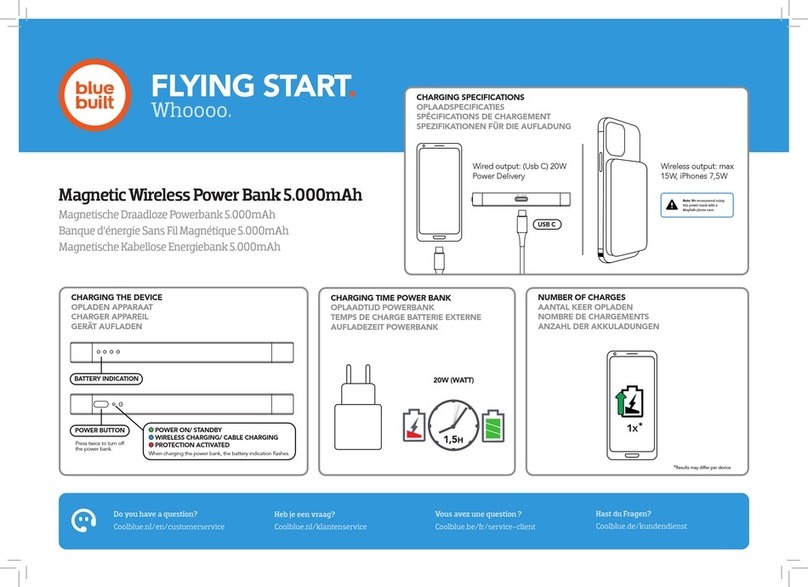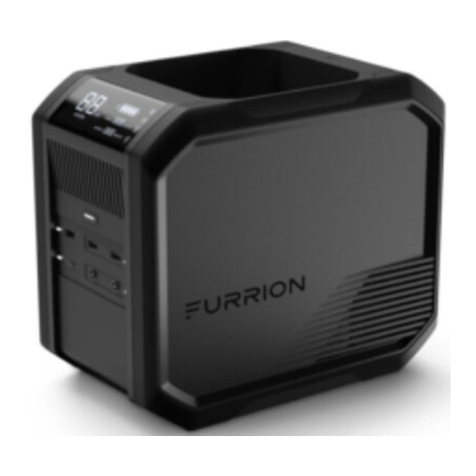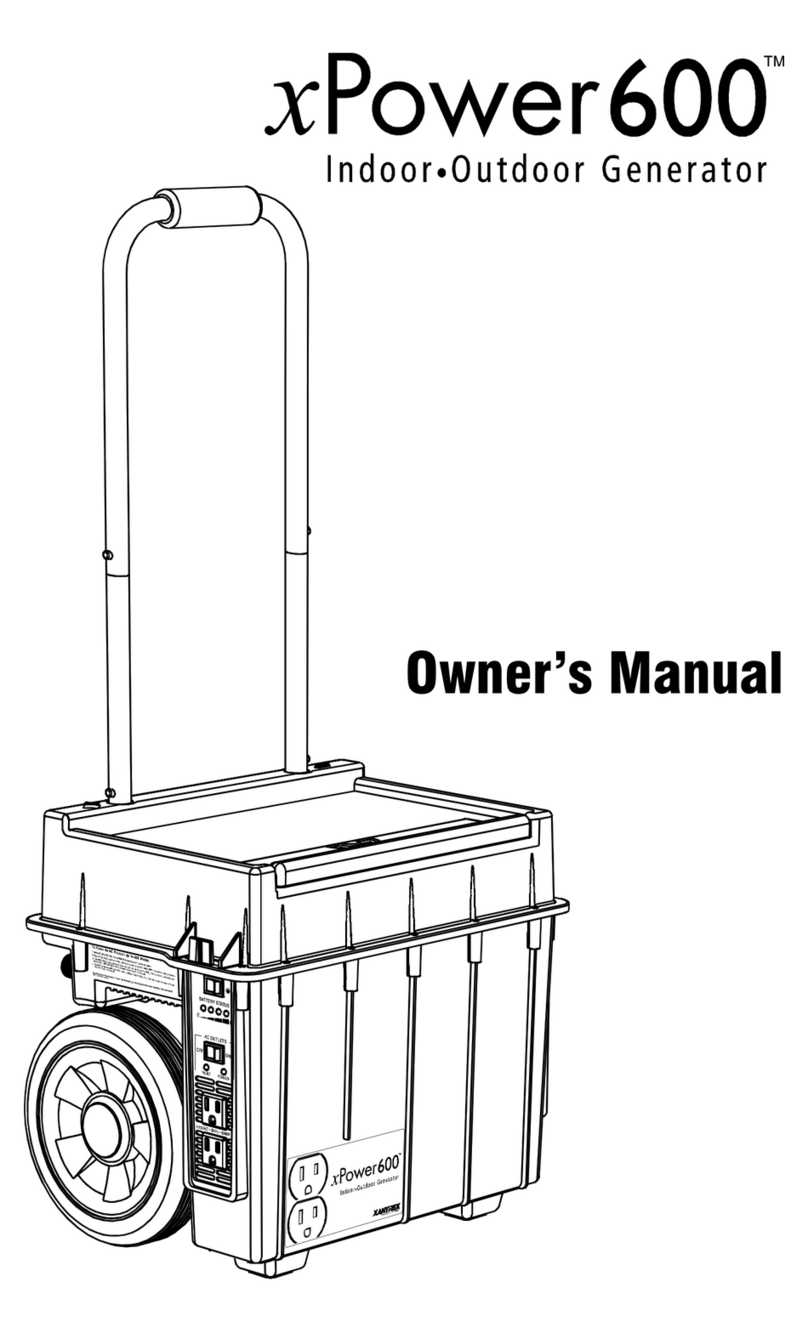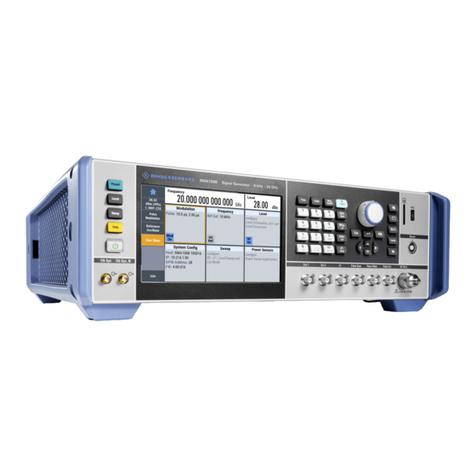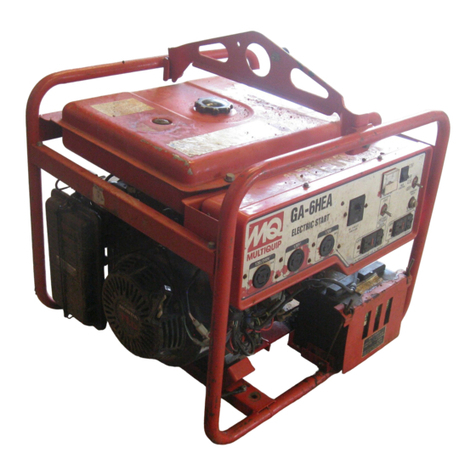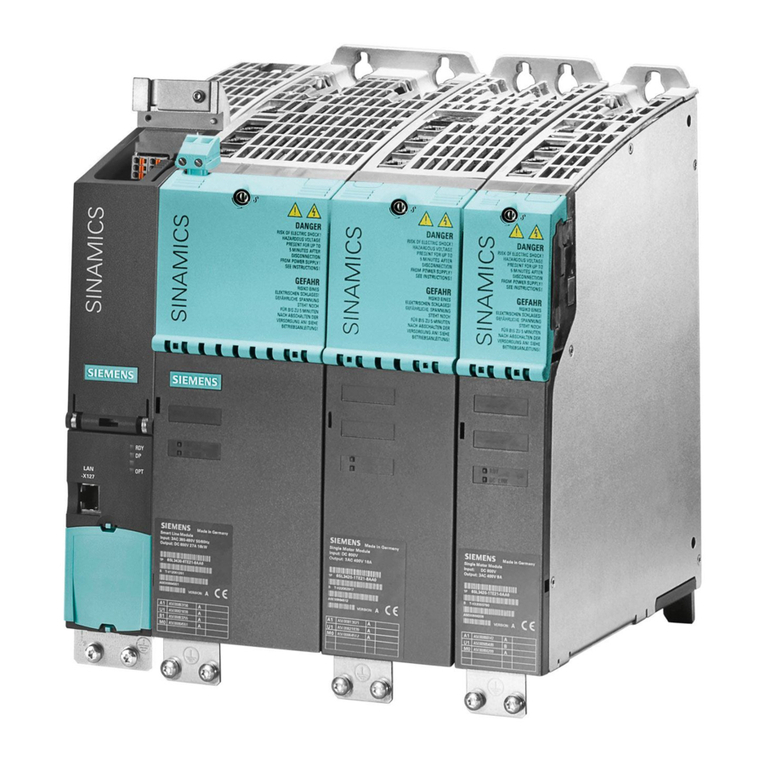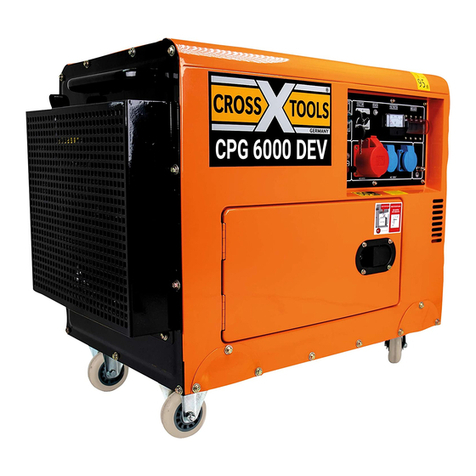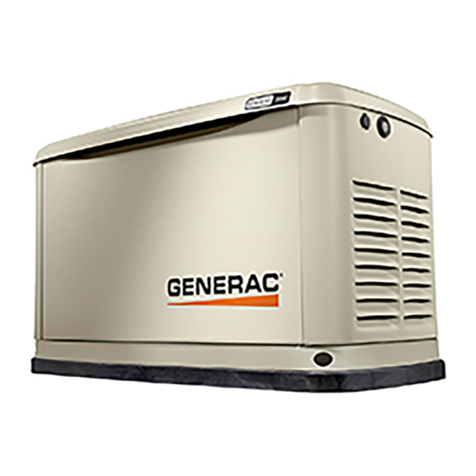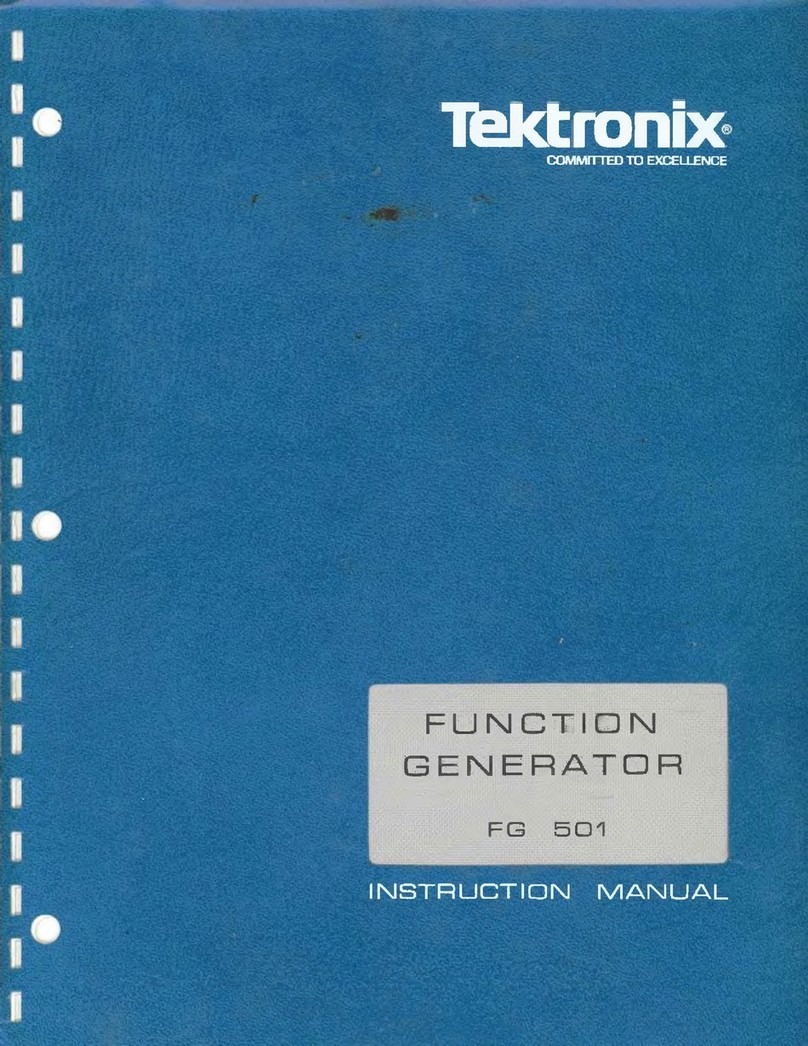PRESSCON N-Gen User manual

N-Gen nitrogen generator, High
Performance and Single tube
User manual
Type
:
User manual
Date
:
March 2021
Version / Revision
:
Version 2.0, Revision 00
Status
:
Approved
Company
:
PRESSCON
Location
:
Honselersdijk

Page 2 of 19

Page 3 of 19
Table of content
INTRODUCTION .................................................................................................................................................. 4
1PRECAUTIONS AND SAFETY INSTRUCTIONS ................................................................................................. 5
1.1 GENERAL SAFETY STANDARDS .................................................................................................................... 5
1.1.1 Working with the N-Gen nitrogen generator........................................................................................5
1.1.2 Working with the compressor...............................................................................................................5
1.2 DESCRIPTION OF GENERAL HAZARD SYMBOLS ................................................................................................ 6
2SYSTEM COMPONENTS................................................................................................................................ 7
2.1 N-GEN NITROGEN GENERATOR HIGH PERFORMANCE (H.P.) MULTI-F................................................................. 7
2.2 N-GEN NITROGEN GENERATOR HIGH PERFORMANCE (H.P.) N-GEN CONTROLLER ................................................. 8
3GENERAL OPERATION ................................................................................................................................ 11
3.1 OPERATION OF THE N-GEN NITROGEN GENERATOR ...................................................................................... 11
3.1.1 Compressed air supply ........................................................................................................................11
3.1.2 Nitrogen production............................................................................................................................11
3.2 SCHEMATIC OVERVIEW OF THE N-GEN NITROGEN GENERATOR ........................................................................ 12
4CONTROLLER ............................................................................................................................................. 13
4.1 MULTI-F CONTROLLER........................................................................................................................... 13
4.2 N-GEN CONTROLLER ............................................................................................................................. 13
4.2.1 Display 1085 ........................................................................................................................................13
5ALARM AND ERROR HANDLING ................................................................................................................. 14
5.1 MULTI-F............................................................................................................................................. 14
5.1.1 Alarm button .......................................................................................................................................14
5.1.2 Faults and alarms ................................................................................................................................14
5.1.3 Alarm messages...................................................................................................................................14
5.1.4 Resetting alarms..................................................................................................................................15
5.2 N-GEN CONTROL.................................................................................................................................. 15
5.2.1 Faults and alarms ................................................................................................................................15
6MAINTENANCE AND SERVICE..................................................................................................................... 16
6.1 MAINTENANCE OF THE N-GEN NITROGEN GENERATOR .................................................................................. 16
6.2 COMPRESSOR MAINTENANCE .................................................................................................................. 16
7WARRANTY................................................................................................................................................ 17
8APPENDIX .................................................................................................................................................. 18
9DOCUMENT HISTORY................................................................................................................................. 18
10 TO CONCLUDE............................................................................................................................................ 19

Page 4 of 19
Introduction
The N-Gen nitrogen generator is a system that provides a supply of nitrogen in a pressure vessel. It is applicable for various
purposes and in various industries where it is desired to generate nitrogen on site. The N-Gen nitrogen generator is a system that
consists only of a nitrogen generator unit. However, to be fully functional the N-Gen nitrogen generator needs a compressed air
supply and a start/stop signal.
The N-Gen nitrogen generator works on the basis of a start / stop signal that is supplied externally. This can be in the form of a
pressure switch or a digital output signal from another PLC. As soon as the N-Gen receives the signal, it immediately starts
producing nitrogen. As soon as the signal drops out, the N-Gen will first complete the production cycle, after which the generator
will stop. The nitrogen supplied by the N-Gen nitrogen generator is in fact an air mixture with a nitrogen concentration that
deviates from 95.0 vol.%N2 to 99.9999 vol.%N2. Nitrogen is an inert gas and at a high concentration it has the property of
preventing corrosion in a steel tank or pipe. It can also be used for fire and explosion prevention and for research in hospitals.
Furthermore, there are many other possible applications for nitrogen.
Important to know
The N-Gen nitrogen generator can be delivered in a range of capacities and in 2 versions. The N-Gen nitrogen generator can be built
as a High Performance (H.P.) generator or as a Single Tube generator. The difference is in the number of PSA tubes that are used to
make nitrogen. The High Performance version uses 2 PSA tubes and the Single tube version uses only 1 PSA tube. The Single Tube
generator is a simplified version of the High Performance generator, but the function of both systems remains the same. However,
for the Single Tube version it is always necessary to use a nitrogen pressure vessel. It is important to know that the Single Tube
version of the N-Gen has a maximum capacity of 2.5 m³/h with a maximum purity of 99%.
The N-Gen nitrogen generator has a capacity that varies from systems that supply 2.0 m³/h nitrogen to systems that can supply
16.0 m³/h of nitrogen at 8 bar compressed air and 99% purity. In addition, by combining several N-Gen generators, a capacity of
over 3,000.0 m³/h can be reached, depending on the customer's requirements.
The N-Gen nitrogen generator is designed on flow and the corresponding purity. The higher the purity the lower the flow that
comes from the generator. An N-Gen 16.0 for example has a capacity of 16.0 m³/h nitrogen at a purity of 99% and 8 bar
compressed air. However, if the purity is increased to 99.99%, the generator only has a capacity of 4.0 m³/h nitrogen, if the purity is
decreased to 95% the capacity becomes 27.0 m³/h nitrogen. The pressure of the compressed air is also important. In the example
above, the flow of 16.0 m³/h of nitrogen is achieved with an air pressure of 8 bar. If the air pressure is lowered to 6 bar, the
generator will no longer deliver 16.0 m³/h nitrogen. The flow will be lower. When the capacity of the N-Gen nitrogen generator
increases, the dimensions of the system also increases, however, the rest of the appearance remains the same.

Page 5 of 19
1Precautions and safety instructions
1.1 General safety standards
When working with the N-Gen nitrogen generator, there are a number of safety risks that have to be considered. These risks
include topics such as dangerous voltages, high pressure and danger of suffocation when breathing in a high concentration of
nitrogen. These are further explained in this chapter. It is highly recommended to observe the safety risks before carrying out any
work on the system. The safety risks in this chapter are divided among the different components of the system. For more
information on the composition of the components, see chapter 2.
1.1.1 Working with the N-Gen nitrogen generator
The N-Gen nitrogen generator is commonly located in the technical room of the facility. When operating or when working on the
nitrogen generator, the following hazards should be considered.
Symbol
Description
Applies to
HIGH PRESSURE, Relief pressure from
components before work is conducted.
The external components of the nitrogen generator which are:
•Valves;
•Hoses;
•PSA vessels.
DANGEROUS VOLTAGE,
Forbidden to work on the system if the
power is on.
All components that are connected to the control cabinet. Applied
voltages are:
•24V AC;
•25V DC;
•230V AC;
DANGER OF INHALATION,
danger of asphyxiation if breathing
high concentration of nitrogen.
Avoid the specified area to avoid health
hazards.
The nitrogen output connection. The mixture produced by the
nitrogen generator consists of 95% or more nitrogen. Inhalation
directly from the output connection may cause intoxication. The
nitrogen quickly mixes with the ambient air so that at a distance of
>0.5m from the nitrogen output connection it no longer poses a
health risk.
1.1.2 Working with the compressor
In order to work safely and responsibly with the compressor, it is recommended to read the maintenance manual of the respective
device carefully. Please also observe the hazard symbols and safety precautions. In addition to the symbols described in this
manual, the manufacturer may have used different symbols. When working on the compressor, the following hazards, which
generally apply to the compressors, must be taken into account.
Symbol
Description
Applies to
HIGH PRESSURE, Relief pressure from
components before work is conducted.
The external and internal components of the compressor which
are:
•Compressed air HP vessel;
•Tubing, filters, oil barrel;
•Compressor block.
OVERPRESSURE VALVE,
Be aware of the sudden relief of
overpressure.
The compressed air HP vessel which has an overpressure valve of
10 Bar. The overpressure valve can relief its pressure suddenly.
DANGEROUS VOLTAGE,
Forbidden to work on the system if the
power is on.
All internal components of the compressor. Applied voltages are:
•230V AC;
•380V AC.
MOVING PARTS AND ROTAGING FAN,
Risk of getting stuck or injuries to
limbs. Turn the machine off completely
before working on it.
All internal components of the compressor which consist out of
some rotating and moving parts.
For the precautions and safety instructions of the compressor, PRESSCON also refers to the enclosed
instructions of the compressor manufacturer. These can be found with the compressor or in the control panel
of the nitrogen generator.

Page 6 of 19
1.2 Description of general hazard symbols
In addition to the identified risks for the nitrogen generator and the compressor, the following symbols can also be applied. When a
hazard symbol is encountered, please observe its meaning carefully before further commencing the work.
Symbol
Description
Symbol
Description
1. OVERPRESSURE VALVE,
Be aware of the sudden relief of
overpressure.
7. HIGH PRESSURE,
Relief pressure from components before
work is conducted.
2. DANGEROUS VOLTAGE,
Forbidden to work on the system if the
power is on.
8. HOT PARTS,
Do not touch parts with bare hands. Use
heat-resistant clothing.
3. DANGEROUS TO INHALE GAS,
Avoid the specified area or wear appropriate
breathing equipment.
9. MOVING PARTS,
Risk of getting stuck or injuries to limbs. Turn
the machine off completely before working
on it.
4. NOISE,
Wear ear protection to prevent hearing
damage.
10. ROTATING FAN,
Risk of getting stuck or injuries to limbs. Turn
the machine off completely before working
on it.
5.MACHINE WITH AUTOMATIC START,
Machine stops and starts automatically when
it is operating normally. Turn off the machine
completely before working on it.
11. ATTENTION,
Special situation occurs, follow additional
instructions.
6. READ THE OPERATING AND MAINTENANCE
INSTRUCTIONS,
It is advised that the maintenance
instructions are read before continuing work.

Page 7 of 19
2System components
The N-Gen nitrogen generator consists of a nitrogen generator and a compressor. This chapter describes these components by
providing an illustration and numbering the most important parts. The compressor is not described because different brands can be
used that come with their own manual.
2.1 N-Gen nitrogen generator High Performance (H.P.) multi-f
Reset
7.
9.
6.
8.
2. 2.
1.
5.
8.
10.
3.
3.
4.
1.
Figure 1. schematic illustration of the N-Gen High Performance nitrogen generator

Page 8 of 19
2.2 N-Gen nitrogen generator High Performance (H.P.) N-gen controller
2.
2.
14.
7.
FX Prevent
12.
1.
3. 3.
5.
13.
6.
11.
8.
4.
Figure 2. Schematic illustration of the N-Gen High Performance nitrogen generator

Page 9 of 19
2.
2.
14.
7.
FX Prevent
12.
1.
3. 3.
5.
13.
11.
8.
4.
8.
8.
6.
15.
8.
16.
Figure 3. Schematic illustration of the N-Gen High Performance nitrogen generator

Page 10 of 19
Legend
Legend for the N-Gen nitrogen generator.
Ref. No.
Description
Function
1.
Nitrogen output tube
Tube which puts out the nitrogen mixture that is produced by the nitrogen
generator. This outlet will be connected to the piping that runs to the pressure
vessel.
2.
PSA vessels
High pressure vessels with active carbon inside. The Pressure Swing Adsorption
process takes place within these vessels.
3
PSA pressure gauges
0 –10 bar (0,0 –1,0 MPa) pressure gauges that indicate the pressure within the
PSA vessels. The left pressure gauge is for the left PSA vessel and the right
pressure gauge is for the right pressure vessel.
4.
Digital nitrogen HP vessel
pressure regulator
Digital pressure switch with a start and stop steting. At default, the pressure
regulator will generate a start signal below 4.0 Bar. At 6.5 Bar, the signal will turn
off and the text on the display will turn green. If the pressure then drops below
4.0 Bar, the text on the display will turn red and a new start signal is generated.
5.
Control cabinet
Control cabinet containing all the electronic components needed to manage the
nitrogen generator.
6.
Compressed air regulator and
pressure switch
Composition of pressure control valve and pressure switch. The maximum air
pressure for the nitrogen generator is manually setup by adjusting the pressure
control valve. The pressure switch notifies the system if there is a pressure drop.
7.
Compressed air inlet
Push-in connection that is used for connecting the compressor to the nitrogen
generator. This is commonly done with a 16mm nylon air hose.
8.
PSA control manifold
A pneumatically controlled manifold block that regulates the flow of air and
nitrogen during the Pressure Swing Adsorption process.
9.
Compressed air filters
2 filters that filter out dirt and moisture that comes with the compressed air.
10.
Reset button
Red button that lights up when the Multi-F controller receives a signal on its
External alarm input. By pressing the button an attempt can be made to reset the
alarm.
11.
Spring safety
Mechanical valve that releases the excess pressure from the nitrogen storage
tank. This protects the nitrogen storage tank against the creation of a pressure
higher than the design pressure of the tank.
12.
Nitrogen high-pressure vessel
connection
Pipe that blows out the nitrogen mixture produced by the nitrogen generator. This
connection is specially made for a high pressure storage tank.
13.
Touchscreen
The touchscreen is the main control device for reading the statuses and values of
the system. The touch screen is used for navigating and adjusting the settings.
14.
Oxysensor
Oxygen sensor that takes a sample of the nitrogen produced by the generator. By
measuring the sample, the Oxy sensor verifies that the generator is working
properly.
15.
PSA control valves
Electric valves controlled by the generator's controller. The valves provide
pneumatic control of the valves on the PSA control manifolds.
16.
Bekoguard
Switch that detects if humidity is present in the supplied compressed air.

Page 11 of 19
3General operation
3.1 Operation of the N-Gen nitrogen generator
The N-Gen nitrogen generator regulates the pressure in a pressure vessel or directly to a consumer. How the N-Gen does this is
explained in the next steps. The system requires a compressed air supply for this.
3.1.1 Compressed air supply
Step 1. The compressor draws in the air from the environment and compresses it to a pressure of 10 bar(g). Depending on the
installation, this can also be lower with a minimum supply pressure of 6 bar. The compressor has a storage tank for
compressed air and maintains constant pressure. From the storage vessel, the compressed air is transported to the
nitrogen generator via a hose or a fixed line. In the nitrogen generator, the water and the oil residue are separated from
the compressed air by two filters.
3.1.2 Nitrogen production
Step 1. The pressure in the pressure vessel is monitored by means of a pressure switch or a pressure measurement from an
external system. When the pressure becomes too low, a start command will be generated directly or indirectly and the N-
Gen will start producing the nitrogen. If there is no pressure vessel, the system is controlled by an external or other
contact.
Step 2. Nitrogen production starts with drawing in compressed air from the compressor. The compressed air is transported to
the PSA tubes where the Pressure Swing Adsorption process takes place. The N-Gen High Performance nitrogen
generator has 2 PSA tubes for this process. The N-Gen Single Tube nitrogen generator uses only 1 PSA tube for this in
conjunction with a nitrogen storage pressure vessel. The oxygen that is left over from the Pressure Swing Adsorption
process is blown back into the immediate area, but can also be discharged into a channel or to the outside if required.
The remaining mix of oxygen and nitrogen has a purity between 95.0 and 99.9999 vol .%N2. The nitrogen mix is fed to the
pressure vessel and the pressure is increased.
Step 3. When the pressure is at the desired level, the start command is canceled. The nitrogen generator completes the
production cycle. The compressor will continuously maintain the compressed air pressure. When compressed air is no
longer used by the nitrogen generator, the compressor will also turn off.

Page 12 of 19
3.2 Schematic overview of the N-Gen nitrogen generator
Figure 4 gives a schematic overview of the N-Gen nitrogen generator. It shows how all components in the system communicate
with each other.
N-Gen
Control
Nitrogen
generator
Compressor
Filter
PSA valve 1
PSA valve 2
PSA valve 3
Nitrogenpressure OK NO
Alarm
Air pressure
to low NO
Drainvalve
on/off
Main valve
Start
Block
Trigger
N2
Pressure
vessel
Pressure switch
External
PSA valve 4
PSA valve 5
Figure 4. N-Gen nitrogen generator system overview

Page 13 of 19
4Controller
The N-Gen nitrogen generator can be controlled by a Multi-F controller or a N-Gen controller.
4.1 Multi-F Controller
The JGA 944B Multi-F controller is the is the motherboard that controls the N-Gen nitrogen generator. It processes the incoming
start and stop signals and thereby generates the correct output signals.
Figure 5. JGA 944B Multi-F controller
4.2 N-Gen Controller
The N-Gen Control is the control board for measuring and controlling. A N-Gen nitrogen generator consists of one or more N-Gen
Controls. For the N-Gen Control two hardware versions can be used: the JGA2000 and the JGA2024. These boards are fully
compatible except for the expansion connector which is only present on the JGA2000.
Figure 6. JGA 2024B-1 N-Gen controller
4.2.1 Display 1085
The operation of the N-Gen control can be done by means of a JGA1085. This board has a display on the front. At the back of the
display the intelligence board is mounted. On the display the status of the system is shown and the settings can be made.
Figure 7. JGA 2024B-1 N-Gen controller

Page 14 of 19
5Alarm and error handling
5.1 Multi-F
5.1.1 Alarm button
There is a red alarm button on the right side of the switch panel. The red button will light up as soon as the Multi-F controller of the
N-Gen nitrogen generator receives an alarm signal. The Multi-F controller has 1 digital input to which an alarm signal can be
connected. These can be alarm signals of, for example, temperature protection or thermal protection of the compressor or a
pressure switch that indicates the minimum compressed air pressure of the nitrogen generator. Which alarm it is depends on what
is connected to the digital input. This will usually be the pre-pressure alarm for the N-Gen nitrogen generator, which indicates that
there is too little compressed air pressure for the nitrogen generator. By pressing the button an attempt can be made to reset the
alarm.
Reset
Figure 8. Alarm button no alarm
Reset
Figure 9. Alarm button active alarm
5.1.2 Faults and alarms
When an alarm occurs, this will be reported via the red button on the side of the switch panel. It lights up when one or more alarms
have occurred. The N-Gen nitrogen generator therefore has two alarm levels.
If one of the alarms occurs, the nitrogen generator is stopped and the main valve and the drain valve are closed. The nitrogen
generator is still completing its cycle. In short, during an alarm, the nitrogen generator will:
-Stop generating nitrogen;
-Close the drain valve;
-Close the main valve;
-Light up the red alarm button.
!
The N-Gen will respond the same to each of the alarms below. All alarms have the same urgency and the priority of
which depends primarily on the nitrogen demand from other machines.
5.1.3 Alarm messages
EEPROM errors
F01
Eeprom adres
An address fault has occurred.
F02
Eeprom adr0
,,
F03
Eepromcomm
There is no communication with the Eeprom.
Can errors
F04
Canbus halt
The Canbus could not send or receive.
F05
CanrxFifo
The receive buffer of the Canbus is full.
F06
CanrxMBox
The receive messagebox of the Canbus is full.
F07
CantxFifo
The send buffer of the Canbus is full.
RTC errors
F08
RTC comm.
There is no communication with the RTC.
F09
RTC new
The RTC is not set.
RS232 errors
F10
Uart1 rxFifo
The receive buffer of the RS232 is full
F11
Uart1 txFifo
The send buffer of the RS232 is full
Alarm level: 0
System free of faults.
The red reset button is not lit.
Alarm level: 1.
An alarm has occurred.
The red reset button lights up.

Page 15 of 19
General errors
F12
Configuration
There is a fault in the configuration.
F13
Base value
The basic value is incorrect.
F14
Current
The current has dropped.
F15
1st boot
The PsaControl boots for the first time.
F16
Button displ.
A button has been pressed during boot.
F17
PsaCtrl N/A
The PsaControl controller was not found.
F18
SW version
The softwareversions do not correspond.
F19
Taskfifo
The taskfifo is full.
Special errors
F20
External alarm
There is an alarm on the alarm input.
5.1.4 Resetting alarms
All alarms can be reset by pressing the red reset button once. The alarms that are no longer applicable will disappear. The alarms
which are still active will return which causes the red button to remain lit.
If the compressed air pressure is OK and an alarm remains, one of the other alarms related to the Multi-F's hardware is active. A
service technician must read out the controller. Please contact PRESSCON. Also in case of technical failure, questions or other
issues you can contact PRESSCON at any time.
5.2 N-Gen control
5.2.1 Faults and alarms
The error levels are divided into four categories. Of these four categories, the lowest two are warnings and the highest two are
alarms. Warnings report the error, but do not affect the operation of the N-Gen Control. When an alarm occurs the N-Gen Control
will stop functioning. It will then no longer be used in the system. Per type of error message (Warning and Alarm) there is a
difference between local and system error messages. If the error message is local, it is only handled locally. If the error message is
for the system, the system will respond to this error message.
Level
Name
Description
Range
None
None
No error level
N-Gen Control
Level 1
Warning local
Warning for this N-Gen control only
N-Gen Control
Level 2
System warning
Warning for the whole system
System
Level 3
Local alarm
Alarm for this N-Gen control only
N-Gen Control
Level 4
Alarm system
Alarm for the whole system
System

Page 16 of 19
6Maintenance and service
6.1 Maintenance of the N-Gen nitrogen generator
To make sure that the N-Gen nitrogen generator continues to work well, the owner must provide the system with its essential
maintenance. A part of the maintenance, the weekly checks, are usually done by the owner or its technical personnel. Other annual
checks should be performed by a service engineer.
Activity
To be done by
Weekly
Each year or
every 2.000
hours
Every 2 years
or every 4.000
hours
Every 2 years
Nitrogen generator
Visual inspection
Owner
X
Tightening PSA spindles
Service engineer
X
Check compressed air filters
Service engineer
X
Check output flow and purity.
Service engineer
X
Clean dirt catcher of compressor*
Service engineer
X
Replace the compressed air filters
Service engineer
X
*The compressors supplied by PRESSCON with the N-Gen nitrogen generator have an extra dirt trap at the bottom of the compressed air tank. This is
not mentioned further in the compressor manual and is therefore included in the overview above.
6.2 Compressor maintenance
Although the N-Gen nitrogen generator is generally equipped with a separate compressor, the maintenance instructions are
different for each type and brand of machine. The maintenance instructions for the compressor are described in the user manual
which is supplied as a separate document together with the compressor.

Page 17 of 19
7Warranty
PRESSCON provides a warranty of 1 year on the components of the N-Gen nitrogen generator, assuming that the following
conditions are met:
•The equipment has been installed by PRESSCON or under direct or indirect supervision of PRESSCON.
•The equipment is undamaged and unprocessed and not defective due to improper use.
•The equipment is not defective by inadequate maintenance or other proceedings.
•The equipment is not defective or non-speech hit by negligence, accident or whatsoever.
The warranty includes checking, repair or replacement if defective from proven equipment. Faulty equipment, which has been
replaced shall become property of PRESSCON.
Regarding the products supplied by PRESSCON in the Netherlands, PRESSCON refers to the general terms of conditions. All offers
and agreements relating to goods to be delivered and / or services within the Netherlands are applicable the general terms and
conditions for the technology industry, as last filed by the FME-CWM with the court in The Hague. A Dutch copy of these terms is
included with all Dutch offers and agreements. Other terms and conditions are expressly rejected.

Page 18 of 19
8Appendix
In addition to this document, the description of the content extends to the following appendixes:
Appendix ID
Description
Version
-
-
V0.0_R00
9Document history
Version 1.0 to 2.0 indicates : Modification, in lay-out, structure or other major modifications;
Version 1.0 to 1.1 indicates : Supplement, a chapter of paragraph has been added to the document;
Revision _R01 to _R02 indicates : Correction, an image, language error or text error has been corrected.
Version
Date
Modification
1.1_R00
20-04-2020
Manual version 1.1_R00 translated from Dutch to English.
1.1_R01
28-04-2020
Corrected descriptions about variety of nitrogen purities in:
-Introduction.
-Important to know
-1.1 Working with the N-Gen nitrogen generator
-3.1.2. Nitrogen production.
2.0
12-2020
New schematic views added.
Textual improvements made.
Display 1085 added
N-Gen control Faults and alarms added

Page 19 of 19
10 To conclude
This manual has been written in order to support the mechanic, installer or customer in adjusting, modifying or working with a
product of PRESSCON. Its aim is to maintain and possibly improve the quality of its products. If additional information or support is
requested then PRESSCON can be consulted through the following information.
PRESSCON
Partner for progress
+31 (0)174 64 82 92
www.presscon.nl
Veilingweg 25-27A, 2675 BR Honselersdijk
Table of contents
Popular Portable Generator manuals by other brands
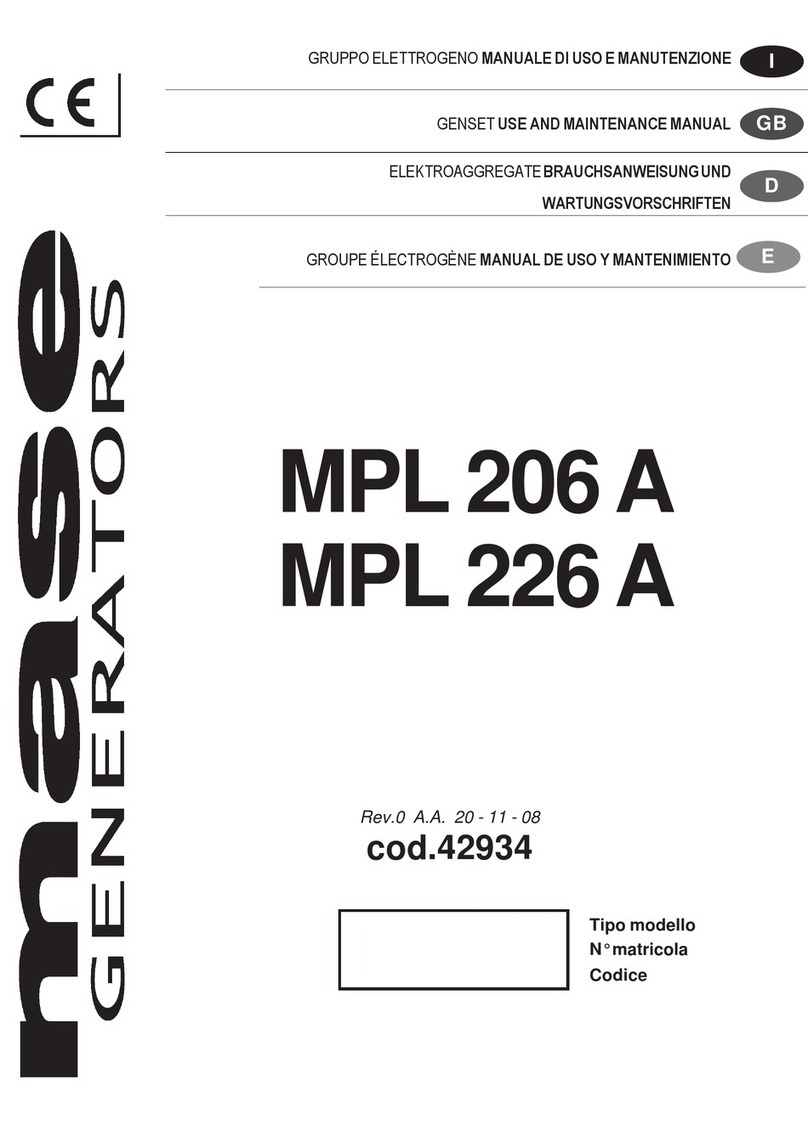
Mase
Mase MPL 206 A Use and maintenance manual
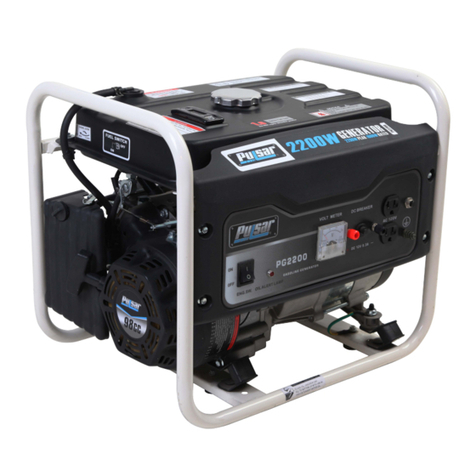
Pulsar
Pulsar PG2200 Operator's manual

DUROMAX
DUROMAX DUAL FUEL HYBRID ELITE XP11500EH user manual
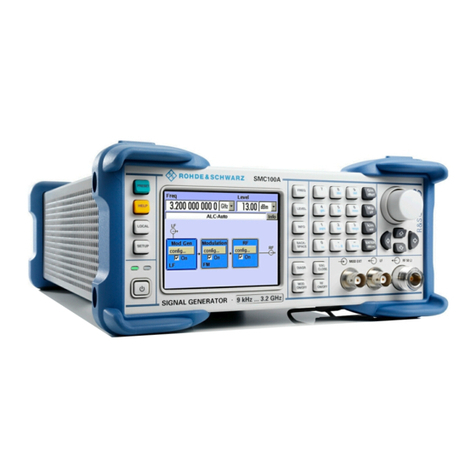
Rohde & Schwarz
Rohde & Schwarz SMC100AP31 quick start guide
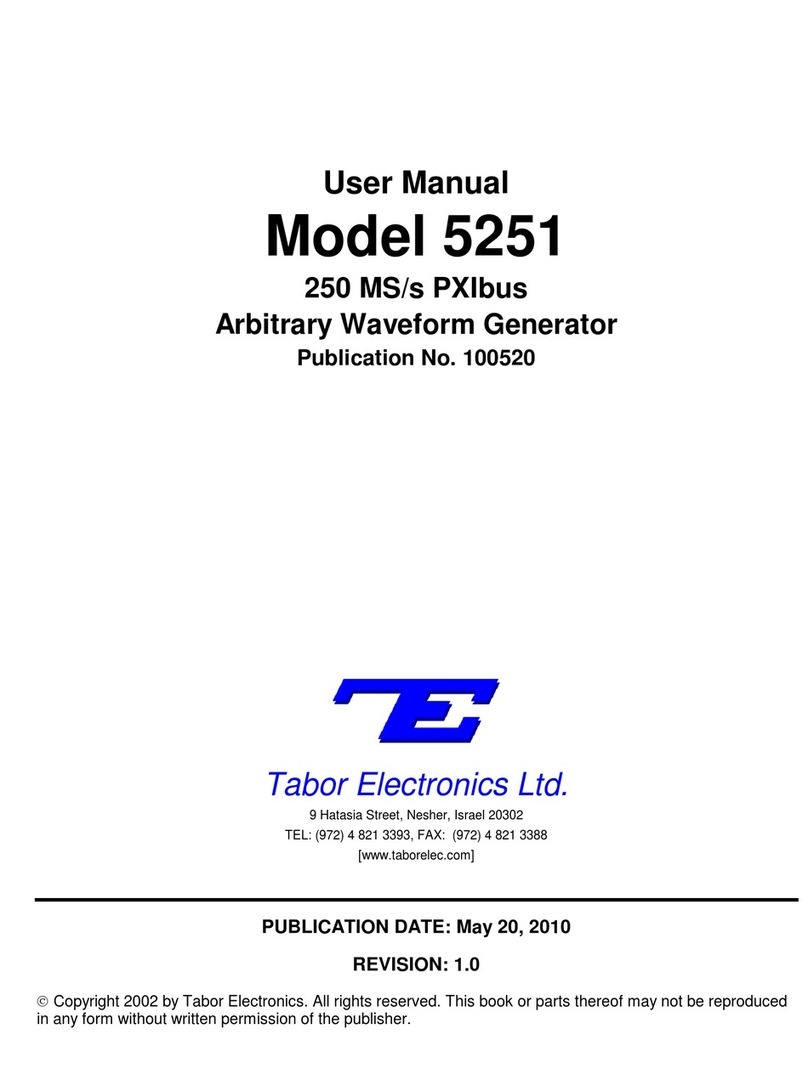
Tabor Electronics
Tabor Electronics 5251 user manual
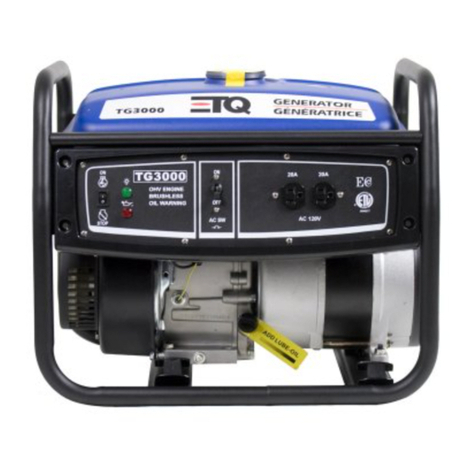
Eastern Tools & Equipment
Eastern Tools & Equipment TG3000 owner's manual
